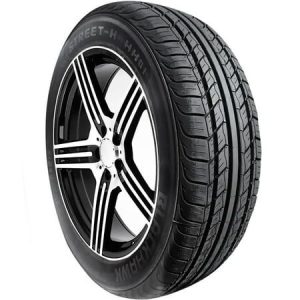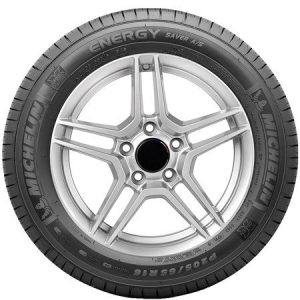Tires are the unsung heroes of your car. They’re the only point of contact between your vehicle and the road, playing a crucial role in safety, handling, and overall driving performance. However, tires don’t last forever. As they wear down over time, their ability to grip the road diminishes, compromising safety and potentially leading to blowouts. So, how often should you change your tires? Unfortunately, there’s no one-size-fits-all answer. Several factors influence tire lifespan, making it essential to be aware of the telltale signs that indicate it’s time for a replacement. This comprehensive guide empowers you to make informed decisions about your tires, ensuring your safety and maximizing their lifespan.
Understanding Tire Lifespan: A Multifaceted Equation
The lifespan of your tires depends on a complex interplay of factors, including:

-
Driving Habits: Aggressive driving habits like frequent acceleration, hard braking, and cornering can accelerate tire wear.
-
Road Conditions: Rough roads with potholes and debris can take a toll on tires, leading to faster wear.
-
Climate: Extreme weather conditions, such as hot summers and cold winters, can affect tire wear.
-
Tire Quality: Higher-quality tires generally offer longer lifespans compared to budget options.
-
Maintenance Practices: Proper tire inflation, rotation, and alignment contribute to maximizing tire lifespan.
Miles Driven: A General Guideline, Not a Golden Rule
While there’s no single answer to the “how often” question, mileage can serve as a general guideline. Most manufacturers recommend replacing tires after they’ve reached 30,000 to 50,000 miles. However, it’s crucial to remember that this is just a starting point. Your actual replacement needs may differ depending on the factors mentioned earlier.
Tread Depth: The Ultimate Indicator – Time to Invest in a Tire Tread Depth Gauge!
The most reliable way to determine when to change your tires is by measuring their tread depth. Tread depth refers to the remaining groove depth in the tire’s surface. These grooves are essential for channeling water away from the contact patch, ensuring proper grip on wet roads. As tires wear down, the tread depth diminishes, reducing their ability to disperse water and increasing the risk of hydroplaning.
Here’s where a tire tread depth gauge becomes your essential tool:

-
Invest in a Tire Tread Depth Gauge: A tire tread depth gauge is a simple and affordable tool that allows you to accurately measure the remaining tread depth on your tires. These gauges are readily available at auto parts stores or online retailers.
-
The Legal Limit: The minimum legal tread depth in the United States is 2/32 of an inch (1.6 millimeters). However, replacing your tires before reaching this limit is highly recommended for optimal safety, especially in wet weather conditions.
-
Aim for Replacement at 4/32″ Depth: Experts recommend replacing your tires when the tread depth reaches 4/32 of an inch (3.2 millimeters). This provides a safety buffer and ensures your tires can perform effectively in various weather conditions.
Beyond Tread Depth: Additional Signs Your Tires Need Replacing
While tread depth is the most crucial indicator, other signs can also signal the need for replacement:
-
Visible Tread Wear Indicators: Most tires have built-in tread wear indicators, often small rubber bars embedded within the tread grooves. When the tread wears down to the point where these bars become visible, it’s time to replace the tires.
-
Uneven Wear: Uneven tread wear across the width of the tire can indicate several issues, such as improper inflation, worn suspension components, or misalignment. Uneven wear necessitates tire replacement and addressing the underlying cause.
-
Bulges or Cracks: Bulges or cracks in the tire sidewall can signify internal damage and pose a serious safety risk. If you notice any bulges or cracks, replace the affected tire immediately.
-
Vibration While Driving: A persistent vibration in the steering wheel or throughout the vehicle at higher speeds can be caused by imbalanced or out-of-round tires. While balancing or alignment might address the issue in some cases, it could also indicate the need for tire replacement.
Don’t Wait for a Blowout: Prioritize Tire Safety and Maintenance
Ignoring the signs that change your tires need replacing can have severe consequences. Here’s why prioritizing tire safety and maintenance is essential:

-
Reduced Stopping Distances: Worn tires have less grip, leading to increased stopping distances, especially on wet roads. This can significantly elevate your risk of a collision.
-
Hydroplaning Risk: As tread depth diminishes, the ability to channel water away from the contact patch is compromised. This increases the risk of hydroplaning, a dangerous situation where tires lose traction and skid across water on the road surface.
-
Blowouts: The most catastrophic consequence of neglecting tire replacement is a blowout. Blowouts can cause sudden loss of vehicle control, potentially leading to accidents and serious injuries.
-
Uneven Wear and Tear: Driving on worn tires can put additional stress on suspension components, leading to premature wear and tear. Replacing tires before excessive wear can save you money on suspension repairs in the long run.
Investing in Safety: The Importance of Proper Tire Maintenance
Here are some key tire maintenance practices to maximize their lifespan and ensure your safety:
-
Regular Tire Inspections: Visually inspect your tires at least once a month for any signs of damage, uneven wear, or embedded objects.
-
Tire Rotation: Rotate your tires every 5,000 to 7,000 miles according to your car manufacturer’s recommendations. Rotation helps distribute wear more evenly across all tires.
-
Proper Tire Inflation: Maintain proper tire pressure as recommended by your car’s owner’s manual. Underinflated tires not only reduce fuel efficiency but also contribute to uneven wear on the tire shoulders.
-
Alignment Checks: Have your car’s wheel alignment checked periodically, especially after hitting potholes or curbs. Misalignment can cause premature tire wear and affect vehicle handling.
Equipping Yourself for Safety: Essential Tire Care Tools
By having a few essential tools on hand, you can take a proactive approach to tire care:

-
Tire Tread Depth Gauge: As mentioned earlier, a tire tread depth gauge is an invaluable tool for monitoring tread wear and determining replacement needs.
-
Tire Pressure Gauge: A reliable tire pressure gauge allows you to check and adjust tire inflation pressure regularly. Digital gauges offer ease of use, while analog gauges are a more affordable option.
-
Air Compressor: An air compressor can be helpful for inflating change your tires at home, ensuring they maintain proper pressure.
The Right Choice for Your Ride: Selecting Replacement Tires
When it’s time to replace your tires, you’ll be faced with a variety of options. Here are some factors to consider when selecting new tires:
-
Vehicle Requirements: Ensure the new tires you choose are compatible with your specific car model and size requirements. Refer to your owner’s manual or consult a tire professional for guidance.
-
Driving Needs: Consider your typical driving conditions. If you frequently drive in wet weather, all-season or performance tires with good wet traction might be a suitable choice. For off-road driving, all-terrain tires are designed for handling rougher terrain.
-
Tire Ratings: Research online tire reviews and pay attention to user ratings on factors like tread wear, handling, noise, and wet performance.
-
Budget: Tire prices can vary depending on brand, type, and performance characteristics. Set a realistic budget and choose tires that offer a good balance of features and value.
Don’t Settle for Subpar: The Value of Professional Tire Installation
While some experienced DIYers might opt for at-home tire installation, professional installation at a trusted tire shop offers several advantages:

-
Proper Mounting and Balancing: Trained technicians ensure your tires are mounted and balanced correctly, which is crucial for optimal performance and safety.
-
TPMS Sensor Check: Modern vehicles have Tire Pressure Monitoring Systems (TPMS) that can malfunction during tire replacement. Professionals can ensure the TPMS sensors are functioning properly after installation.
-
Safety Inspection: A reputable tire shop might also perform a complimentary vehicle safety inspection during your tire service, identifying any potential issues.
Invest in Peace of Mind: Explore Replacement Tire Options Today!
By prioritizing tire safety and understanding the key signs that indicate replacement needs, you can make informed decisions about your change tires. This guide has equipped you with the knowledge to perform regular inspections, conduct proper maintenance, and select the right replacement tires for your vehicle.
